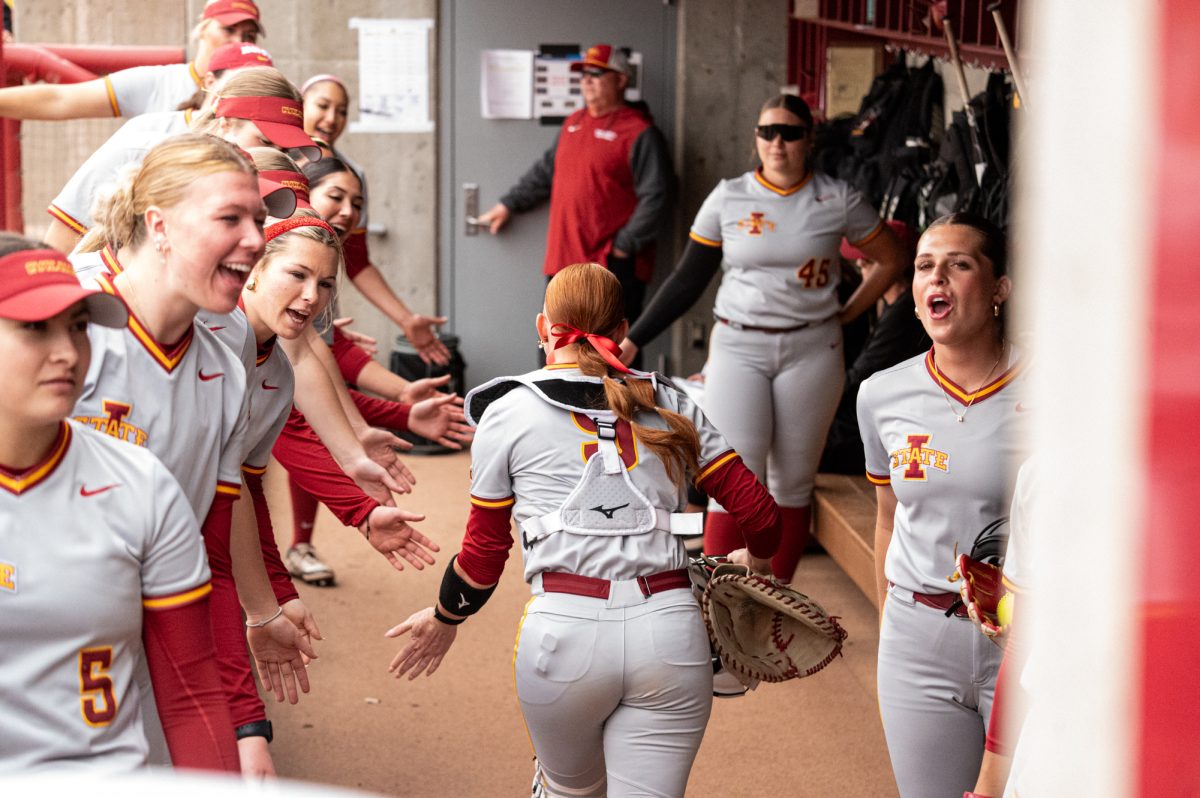ISU Dairy Farm provides milk, manure and learning
April 27, 2018
For a select few students at Iowa State, mornings start as early as a rooster’s crow.
At the crack of dawn, some employees and students at Iowa State head out to the ISU Dairy Farm. About 10 minutes south of campus, as soon as the sun rises students are milking cows in the early morning hours of the day.
From 4 a.m. to 10:30 a.m. every morning, about 1,000 pounds of milk are removed from cows at the ISU Dairy Farm. The process is efficient and fast, getting the cow in and out of the milking station as fast as possible.
“The cows are attached to vacuums to take the milk. Once the milk is not flowing from the cow anymore, the vacuum withdrawals automatically,” said Miguel Luis Rangel-Mendez, program coordinator and manager of the Dairy Farm.
Rangel-Mendez has worked at the Dairy Farm for three months, and prior to that he worked a lot with calves and cattle.
But once the milk is out of the cow, where does it go?
Once processed, the cow’s milk is sent to Prairie Farms, a company that processes the milk and puts it in stores. The milk does not go to Iowa State, since there is no processing plant for it.
The milk leaves Iowa State property, but all of the dairy cows are from within the Iowa State herd, said Hugo Ramirez-Ramirez, assistant professor in animal science and extension specialist.
While finding a place for the milk to go is not a problem at all, there is something else that needs to be stored once it leaves the cow. Since the cows are large and there are many, 400 dairy cows to be exact, the cattle secrete a lot of manure.
Where does the manure go?
A large amount of the manure the cows leave is used for fertilizer for crops or recycled into bedding for the cattle. But since there is so much manure, the leftovers are given to the ISU Compost Facility, located just west of the dairy farm.
“We use some manure that doesn’t go to the compost facility for bedding and other things for the cows. It is all completely recycled,” Rangel-Mendez said.
The manure originally has a muddy and wet texture, but after sitting outside for a bit, it dries up and molds into a perfect bedding material.
When the extra manure reaches the compost facility, it is combined with ISU Dining’s food compost, greenhouse materials and corn stalks. After the manure blends with the other compost, it morphs into healthy soil that is taken to Iowa State. The fresh soil is used for things such as landscaping, construction, horticulture and many other situations.
Without the compost facility, the dairy farm would have excess manure with no place to put it. And without the dairy farm, the compost facility would lack healthy nutrients for the compost.
“The compost facility and dairy farm are kind of like a marriage. They need each other,” said Leo Timms, Morrill professor in animal science and extension dairy specialist.
The impact the dairy farm has on Iowa State and its students may not be as direct as the compost facility, where compost is only returned to ISU grounds. But Timms said the education students are getting from the farm may just be the most vital part.
“We wouldn’t have research, teaching, extension and demonstration if we didn’t have a herd of healthy, well-managed, high producing cows with high quality milk,” Timms said.
Rangel-Mendez also stressed learning experiences and education are one of the most important aspects the farm holds. He even stated one of his main goals is setting an example for students and their future careers.
“My plan is to make Iowa State University’s dairy an example of how things should be done instead of how they shouldn’t be done,” Rangel-Mendez said. “I want our students to be proud of what they do here, to feel like they are learning and committing to doing a good job.”







